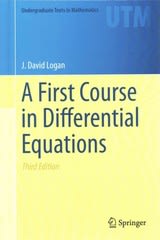Question
Q1) Independent-Samples t Test (15 points total) ** Round calculated results to the hundredth (2 nd place to the right of the decimal)** In a
Q1) Independent-SamplestTest (15 points total)
**Round calculated results to the hundredth (2nd place to the right of the decimal)**
In a cognitive psychology experiment, the researcher is interested in whether the encoding condition has a significant effect on memory for a set of drawings. In encoding condition A, subjects are asked to name the object in each drawing; in encoding condition B, subjects are asked to name the color of each drawing. Then all subjects are tested on their memory of the drawings. Each recruited subject is randomly assigned to either encoding condition A or encoding condition B.
Based on memory theories, the researcher hypothesized that condition A (object naming) would lead to significantly better memory compared to condition B (color naming), and she sets the significance level at = .01 for a one-tailed test.
Hint: You may remember a similar scenario in the previous assignment, but with a crucial difference. In the previous assignment, each subject is tested in BOTH condition A and condition B, while each subject here is tested in only ONE condition (either A or B).
| Subject ID | Encoding A | Subject ID | Encoding B | |
| 1 | 77 | 13 | 88 | |
| 2 | 80 | 14 | 83 | |
| 3 | 93 | 15 | 81 | |
| 4 | 78 | 16 | 77 | |
| 5 | 90 | 17 | 91 | |
| 6 | 85 | 18 | 90 | |
| 7 | 91 | 19 | 86 | |
| 8 | 87 | 20 | 76 | |
| 9 | 91 | 21 | 88 | |
| 10 | 90 | 22 | 74 | |
| 11 | 86 | 23 | 79 | |
| 12 | 94 | 24 | 89 |
a. What is the dependent (outcome) variable? What is the independent (grouping) variable?(1 point total: .5 for each variable)
b. Create the null and alternative hypotheses (directional) for this study, using both words and symbol notation(1 point total: .5 for each hypothesis, both written and symbol notation need to be correct to earn the credit for each hypothesis)
| Written | Symbolic Symbol bank for copy & pasting: =<> | |
| Null | H0: | |
| Alternative | H1: |
c. CalculateM1andM2(1 point total: .5 point per sample mean, both process and result must be correct to earn the credit)
d. Calculatedf1,df2, anddftotal (1 point total: deduct .5 for each error)
e. Calculateestimated variance for population 1 (s12) and estimated variance for population 2 (s22)(2 points total: 1 point for each variance, .5 if the process is correct but the answer is wrong)
Note: You must provide your calculation process to receive full credit. You can use the Standard Manual Calculation Method or the Alternative Excel Calculation Method. See "Showing Math Work".
f. Calculate the pooled variance (Spooled2) from the two population variances (from question e above)(1 point total: .5 if the process is correct but the answer is wrong)
g. Use the pooled variance (from question f above) to calculate the variance for sampling distribution 1 (SM12) and the variance for sampling distribution 2 (SM22)(2 points total: 1 for each variance, .5 if the process is correct but the result is calculated incorrectly)
Hint: Sampling distribution is derived from the original population and it consists of means of all possible samples drawn from the original population.
h. Calculate standard deviation (Sdiffmean)of the comparison distribution(1 point total: .5 if the process is correct but the answer is wrong)
Hint: This comparison distribution consists of differences between all possible sample means drawn from the two sampling distributions. Its standard deviation is the denominator of the t statistic formula.
i. Calculate thet statistic(1 point total: .5 if the process is correct but the answer is wrong)
j. For the one-tailed test, find the critical t values for this hypothesis test based on the total degree of freedom (from question d above), and the preset alpha level.(1 point total)
k. Compare the calculatedtstatistic with the criticaltvalue by stating which is more "extreme", and then draw a conclusion about the hypothesis test by stating clearly "reject" or "fail to reject" the null hypothesis.(1 point total: .5 for comparison, .5 for decision)
l. Calculate the pooled standard deviation for the populations (use the pooled variance calculated in question f); and then calculate the standardized effect size of this test.(1 point total: .5 for pooled standard deviation, .5 for effect size. Both process and result must be correct to earn the credit for each item.)
m. Draw a conclusion based on the hypothesis test result and the effect size. In other words, did encoding condition have a significant effect on memory score? Was the effect small, medium, or large?(1 point total: .5 for each element).
Step by Step Solution
There are 3 Steps involved in it
Step: 1

Get Instant Access to Expert-Tailored Solutions
See step-by-step solutions with expert insights and AI powered tools for academic success
Step: 2

Step: 3

Ace Your Homework with AI
Get the answers you need in no time with our AI-driven, step-by-step assistance
Get Started


